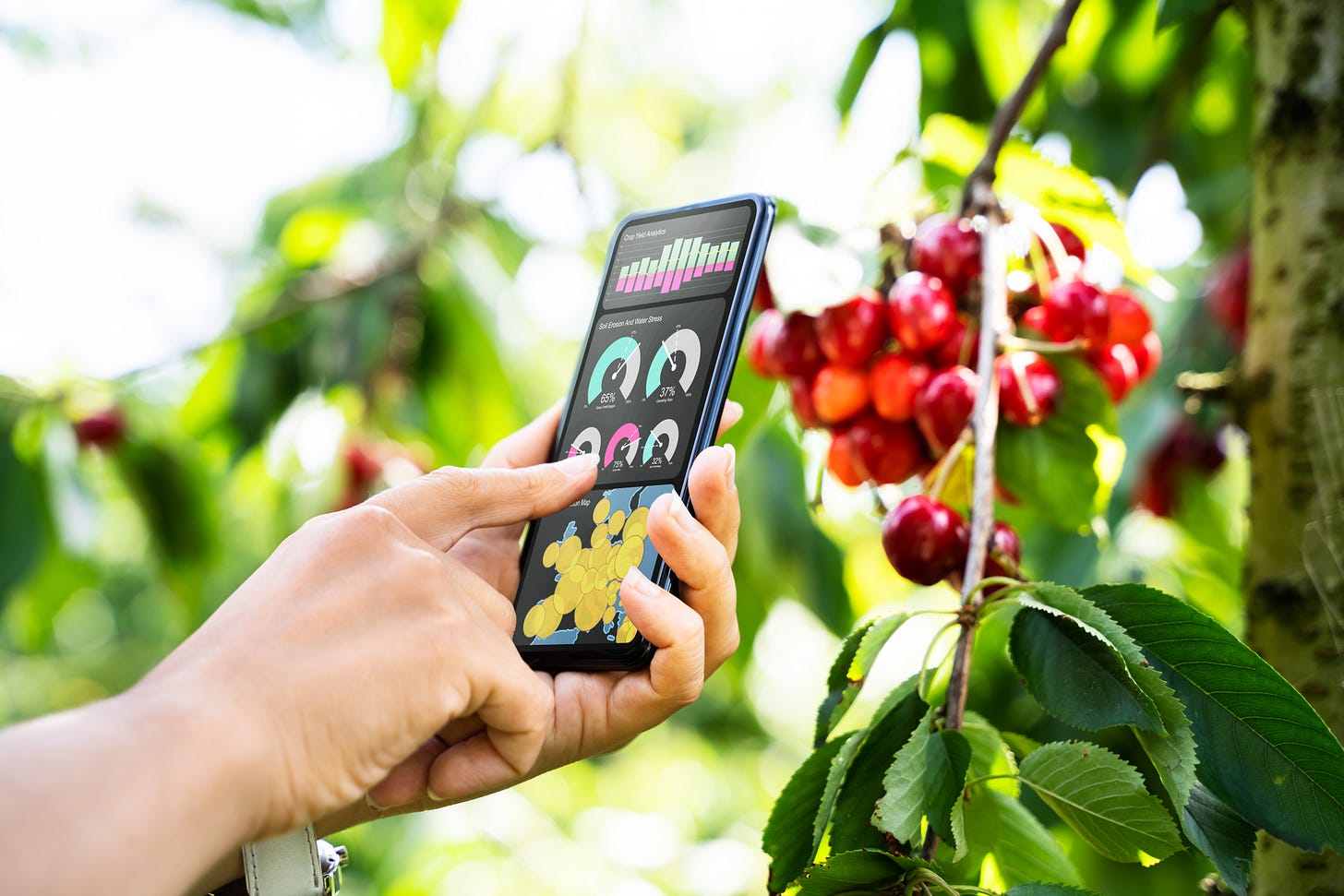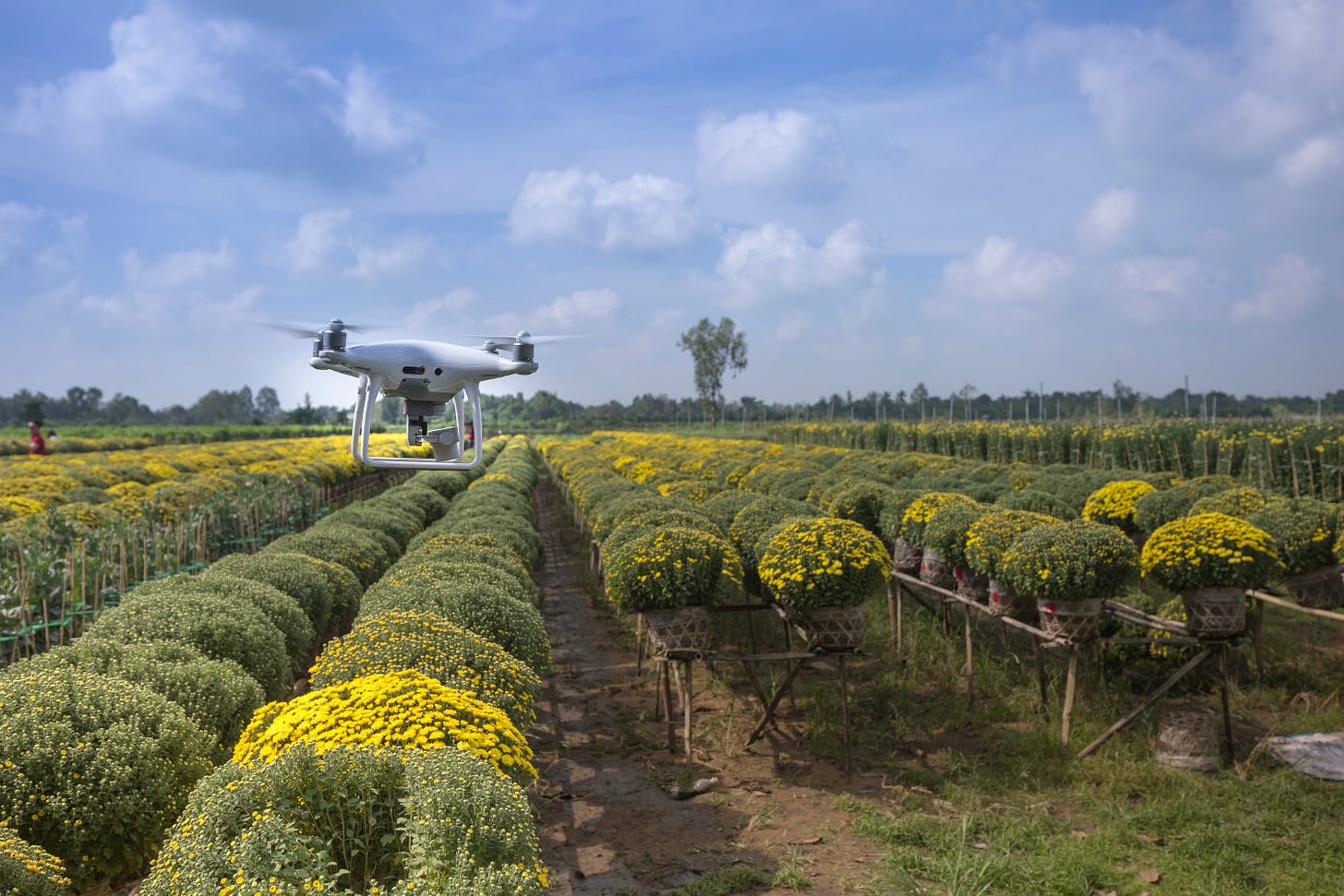Cracking Vietnam’s Agritech Market: Lessons from Market Entry’s Front Lines
Welcome back to Clickable Insights – where the Clickable Impact team shares our perspectives on green and inclusive growth.
Today, we’re tackling the challenge of agritech market entry and tech transfer in Vietnam.
If you’re impatient, under-capitalized, or unwilling to adapt your distribution model, Vietnam probably isn’t for you. But if you’re that rare agritech innovator who is patient, talented, well-resourced, and adaptable, the country has ample upside.
Vietnam consistently ranks among the world’s top exporters of coffee, rice, and shrimp. More than 30% of its population is engaged in agriculture. Vietnam’s government has thrown its weight behind smart agriculture, mechanization, and digital transformation. Meanwhile, a growing urban middle class demands ever safer, higher-quality food in steadily increasing quantities.
But Vietnam’s agriculture sector can be nuanced, slow-moving, and relationship-driven. Certain sub-sectors of the Agricultural economy can be suspicious of foreign business interests and technology, and sometimes cultural factors embedded in production methods can present a seemingly insurmountable barrier. Establishing a formal presence in Vietnam via a Representative Office of a foreign-owned entity requires navigating plenty of red tape. Then, once established, companies must grapple with high capital costs and restrictions on their ability to repatriate profits.
Below, you’ll find a practical user’s guide to entering Vietnam’s agritech market. Follow these steps to derisk – to take deliberate steps toward the market’s high ceiling without falling through its perilous floor. If you are an agritech innovator, you can skip ahead to the article below. It’s illuminating.
If you’re one of the many donors and development partners subscribed to this newsletter, we have a special message for you:
Clickable Impact has a long pedigree in agritech, agriculture, and rural development. Historically, that meant donor-funded market systems development. Then, two years ago, James Symons joined our team, bringing with him more than 15 years of experience helping innovation technology solution providers navigate Asian markets, including the PRC, Indonesia, and Vietnam. Under his leadership, we layered on a new consulting solution: commercial market entry and tech transfer. And through him, we gained new insight into market dynamics – insights that continue to reshape how we perceive donor interventions in the Vietnamese market.
Below, James shares lessons learned with agritech innovators that might be considering Vietnam as their next frontier. Donors and development partners might find their insights provocative. Good. Vietnamese agriculture is a dynamic, exciting, brutally competitive, exploitative economic growth engine that (often barely) supports 30 million livelihoods and nourishes many tens of millions more. Nail the interventions and reduce poverty, stem environmental degradation, sequester carbon, stem mass urbanization, and spread the benefits equitably and inclusively. Get them wrong, and so much damage might be done.
We’re pleased to share these lessons learned, and we hope they contribute to your evolving understanding of the market interventions necessary to bring lasting, positive impact to Vietnam’s food systems and hinterlands.
How to Crack Vietnam’s Agritech Market
By James Symons, Director of Market Entry, Clickable Impact
Vietnam’s agritech sector is at an inflection point. Riding on its status as a top global exporter of coffee, rice, and shrimp, and backed by a government eager to modernize farming through smart agriculture and digitalization, the market offers enormous potential for technology-driven innovators.
Yet this promise comes wrapped in complexities: relationship-centered business culture, regulatory hurdles, and sector-specific nuances that can stall even the most well-funded entrants.
Here are five, hard-earned pragmatic lessons for agritech companies ready to invest the time, resources, and cultural capital necessary to thrive. Whether you’re plotting your first pilot or scaling proven solutions, these insights will help you lay the groundwork, de-risk your approach, and unlock Vietnam’s vast agritech upside.
Lesson 1: Lay Strong Foundations for Your Business Relationships
In Vietnam, a deal isn’t signed at the first meeting — or sometimes even the tenth. Building trust takes time. Farmers, cooperatives, and corporates prefer to work with those who demonstrate long-term commitment. Every client we supported had to adjust their assumptions. It wasn’t about having the best product; it was about earning the right to be trusted.
Foreign firms often misjudge this. We’ve met American companies that hoped to get a first deal done within a week of wheels down in the country. That won’t happen. And on the off chance it does happen, you should be very skeptical of the deal’s resilience.
Instead of jumping in with both feet, plan to invest time and resources into a year or more of relationship-building, including with partners, customers, financial stakeholders, and often both local and national government. You will need local representation. Even Korean and Chinese business interests, who have far more nuanced understanding of Vietnamese market dynamics, rely heavily on consultants and local resources to act on their behalf.
Your local representative will activate their network for you, vouch for you, and keep discussions moving in between your (hopefully frequent) visits. You may be surprised to hear how frequently your local representative fields a call from a partner, customer, or government official on your behalf – sometimes late in the evening or on weekends, because no times are sacrosanct in Vietnam and voicemail is taboo. These calls will include far-out questions, drink invitations, and awkward requests. And each is an important brick in the foundation of a valuable relationship that your local representative will engage with grace, patience, and cultural understanding.
Local representation comes with its own risks, however. There are multitudes of HR companies that can legally employ a local representative on your behalf, for a hefty fee. But they cannot provide the kind of HR and disciplinary oversight that might be expected in your home market. A common occurrence, especially among sales and business development staff, is holding two or more freelance roles simultaneously. Companies should be willing to put in firm milestones and sales targets from the beginning, and to churn through a few sub-par candidates before you find the right fit. If it doesn’t feel right, be prepared to start over rather than have a poor sales performance drag on.
Lesson 2: Work with Trade Promotion Agencies!
Your country likely has a trade promotion office that conducts training on globalization and trade missions to destinations such as Vietnam. Many subsidize companies’ involvement. Sometimes, they even have landing pads, country offices, or partnerships with allied but separately funded organizations that can provide market introductions and other in-country services. Take full advantage of these programs, especially during the early stages of your market exploration journey.
Over the last six months, Clickable Impact has partnered with Enterprise Ireland to provide joint support to Irish agritech and livestock solutions that aim to explore the Vietnamese market. Under this partnership, Enterprise Ireland and the market entry candidate co-finance a small Clickable Impact market study. Then, depending on the outcome of the market study and the company’s interest, Clickable Impact stands ready to provide more advanced, tailored support. This is a great arrangement, as Enterprise Ireland subsidizes and derisks the company’s first, tentative step into Vietnam. However, it also offers companies access to a trusted partner, which they might otherwise struggle to find and evaluate.
Lesson 3: Carefully Evaluate Support Opportunities through Overseas Development Assistance Programs
Clickable Impact has done a lot of work funded under Overseas Development Assistance (ODA). We do not mean to bite the hand that feeds us. Such programs can have a considerable positive influence on market systems – contributing to an enabling policy environment, reducing regulatory obstacles, unlocking public investment, and directing various flavors of catalytic finance toward projects and companies. They also tend to elevate the profiles of the companies they touch.
However, participation carries high administrative costs, including proposal writing and burdensome monitoring and reporting. Typically, funds are matched so there is still a substantial cost of investment either in kind or in cash.
Moreover, their results frameworks are not purely, or even primarily, commercially motivated. There is often an implicit expectation that beneficiary companies trade margin or other commercial interests for impact. In agriculture, ODA initiatives might want their private sector partners to work directly with smallholder farmers rather than aggregators and intermediaries. They might prioritize climate-smart approaches and environmental protection over yield optimization. They will forbid partnerships and commercial arrangements with companies and individuals that fail their environmental and social safeguards.
They won’t, indeed they can’t, bend these rules to accommodate your business objectives or your investors. There are notable exceptions, however, that have more commercial objectives at their core. Clickable Impact’s client, Hillridge, benefited substantially from participation in Australia’s Department of Foreign Affairs and Trade (DFAT)'s Business Partnership Platform (BPP) in the Mekong Delta, which enabled and subsidized expansion into a new region for their crop insurance products and unlocked partnerships with private sector and other ODA programs by virtue of the umbrella of credibility enabled by DFAT. Other programs, like the BPP, do exist, although many are implemented by private sector intermediaries, such as accelerators, with ODA funding coming only indirectly via funds of funds or other vehicles.
Clickable Impact only works with businesses that have impact missions and take measures to mitigate their negative impacts. Yet, we firmly believe that true impact goes hand-in-hand with commercial viability and scalability. We advise our clients not to lose sight of the former, but always give higher priority to the latter. That might mean forgoing ODA partnerships in the early phases of market entry, but it need not preclude future partnerships, such as future DFI investments.
Lesson 4: Know Your Customer
Vietnam’s agricultural value chains are complex. Targeting individual farmers often isn’t viable. Instead, agritech companies need to understand who controls purchasing power — often cooperatives, processors, or input suppliers — and who influences purchase, including government agencies, established agribusinesses, or NGOs. Working through these channels has embedded scale and builds trust.
While relationships are crucial in Vietnam, too many foreign entrants have been burned by entering exclusive distribution agreements or joint ventures prematurely. Companies should prioritize gradual market entry models, such as using consultants, pilot distributors, or non-exclusive partnerships, until a partner has proven itself capable and trustworthy. Due diligence must go beyond surface-level checks. Speaking with customers, competitors, and neutral industry players can help validate a potential partner’s real reputation. Ultimately, agritech companies should structure relationships in ways that align incentives and allow for graceful exits if things don’t work out.
Distributors can be an asset or a liability. Many distributors in Vietnam promise the world during early conversations, seeking exclusivity agreements before trust or competence has been proven. Sellers of a physical product may be tempted to offer generous credit terms to ‘crack’ the market, only to find the product sitting in the warehouse and the bill never being paid. A sad reality is that most distributors are margin sellers. A unique product offering with a low margin and high technical requirements for selling may seem compelling in a first meeting, but ultimately suffers from a time value of money mismatch in the eyes of many distributors or partners.
As such, early enthusiasm is not a reliable indicator of distributor quality. It is easy to get excited by a product that promises both environmental and commercial sustainability, especially during initial meetings at trade shows and conferences. We advise companies to avoid exclusive agreements at the outset and to embed a company resource alongside distributors to maintain momentum and oversight. Visiting customers together, sharing market intelligence, and providing ongoing support are critical practices to prevent distributor drift, where your product quietly slips to the bottom of their priority list.
Agros’s gradual market entry strategy, supported by Clickable Impact, offers a practical model. Rather than immediately committing to local partners or heavy investments, Agros tested the market incrementally, refining their partnership approach based on direct, hands-on experience. Agros chose a strategic partnership with Stride, a local solar financing company, as a first step, for mutual benefit, but without exclusivity.
Companies should remember that a niche, higher-cost product will struggle to compete for attention against faster-moving, commoditized goods. Distributors will naturally gravitate toward easier sales. Without close partnership management, agritech startups risk being deprioritized.
Lesson 5: Smart Piloting (Not Free Piloting)
Pilots are essential in Vietnam and neighboring countries. Farmers and buyers need to see technology perform under local conditions. They simply won’t believe that a technology or business model that works perfectly well in Thailand or Indonesia will work similarly well in Vietnam. A common refrain will be “but conditions here are different”, even when this is demonstrably false. This is generally true of most countries in Asia – a personal favorite of mine was being told that ‘the Chinese chicken is different,’ despite two companies having a roughly 85% stranglehold on global poultry genetics.
Offering a free pilot, however, is almost always a mistake. If your customer doesn’t invest in the pilot, they won’t value it. Skin in the game lends accountability, engagement, and a sense of ownership. Moreover, a pilot should be large enough to demonstrate commercial outcomes and not just ‘how it (the product) works’. There are ways to offer value in a pilot or demonstration by giving the appearance of ‘no charge.’ If a client is reluctant to pay market value up front for a pilot, there are options to derisk it for both parties. Some recent examples of successful negotiations by our clients to either commit financially, or to increase the scope of a pilot, have included:
Performance and milestone-based contracts, which are a good way to gauge the clients interest.
For equipment-focused pilots, where a technology can be physically taken back, it is sometimes attractive for the client to have a grace period to monitor results, with the knowledge that the purchase is optional in the case of non-performance.
‘Order adjustments’ where the up-front pilot costs are deducted from some future transaction.
All three of these structures have the benefit of assuming a future commercial relationship with the client. They cut through in a non-confrontational way and allow a seller to assess if a client is truly serious about dealing with them.
Successfully cracking Vietnam’s agritech market demands more than a superior product—it requires strategic patience, deep local partnerships, and a clear-eyed assessment of commercial and cultural realities. From building trust brick by brick with clients and distributors to choosing your publicly funded engagement opportunities wisely, each lesson outlined here underscores the need to balance impact ambitions with commercial discipline. By anchoring your strategy in strong relationships, thoughtful piloting, and an adaptive distribution model, you can navigate red tape, foster sustainable growth, and contribute meaningfully to the livelihoods of 30 million farmers. If you’re prepared to embrace the country’s unique pace and partner ethos, Vietnam’s agritech frontier awaits with rewards that extend far beyond the bottom line.
Clickable Insights is brought to you by Clickable Impact
Clickable Impact is an Asia-based consultancy committed to climate action and sustainable development. We have three practice areas: public affairs and communications, sustainable tourism, and transformative innovation. Across our work, Clickable Impact favors projects that urgently mobilize private sector engagement, policy action, and investment.
All views expressed in this newsletter are our own.
Copyright © 2025 Clickable Impact, All rights reserved. You are receiving this email because you opted in via our website.
Our mailing address is:
49 Hai Bà Trưng, Level 13
Hà Nội 11207
Vietnam






